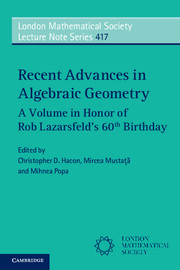We overview some recent results on Fano varieties giving evidence of their rigid nature under small deformations.
1. Introduction
From the point of view of the Minimal Model Program, Fano varieties constitute the building blocks of uniruled varieties. Important information on the biregular and birational geometry of a Fano variety is encoded, via Mori theory, in certain combinatorial data corresponding to the Neron-Severi space of the variety. It turns out that, even when there is actual variation in moduli, much of this combinatorial data remains unaltered, provided that the singularities are “mild” in an appropriate sense. One should regard any statement of this sort as a rigidity property of Fano varieties.
This paper gives an overview of Fano varieties, recalling some of their most important properties and discussing their rigid nature under small deformations. We will keep a colloquial tone, referring the reader to the appropriate references for many of the proofs. Our main purpose is indeed to give a broad overview of some of the interesting features of this special class of varieties. Throughout the paper, we work over the complex numbers.
2. General properties of Fano varieties
A Fano manifold is a projective manifold X whose anticanonical line bundle is ample (here n = dim X).
The simplest examples of Fano manifolds are given by the projective spaces. In this case, in fact, even the tangent space is ample. (By [Mori 1979], we know that projective spaces are the only manifolds with this property.)
In dimension two, Fano manifolds are known as del Pezzo surfaces. This class of surfaces has been widely studied in the literature (it suffices to mention that several books have been written just on cubic surfaces), and their geometry is quite well understood. There are ten families of del Pezzo surfaces. The following theorem, obtained as a result of a series of papers [Nadel 1990; 1991; Campana 1991; 1992; Kollár et al. 1992a; 1992b], shows that this is a general phenomenon.
Theorem 2.1. For every n, there are only finitely many families ofFano manifolds of dimension n.
